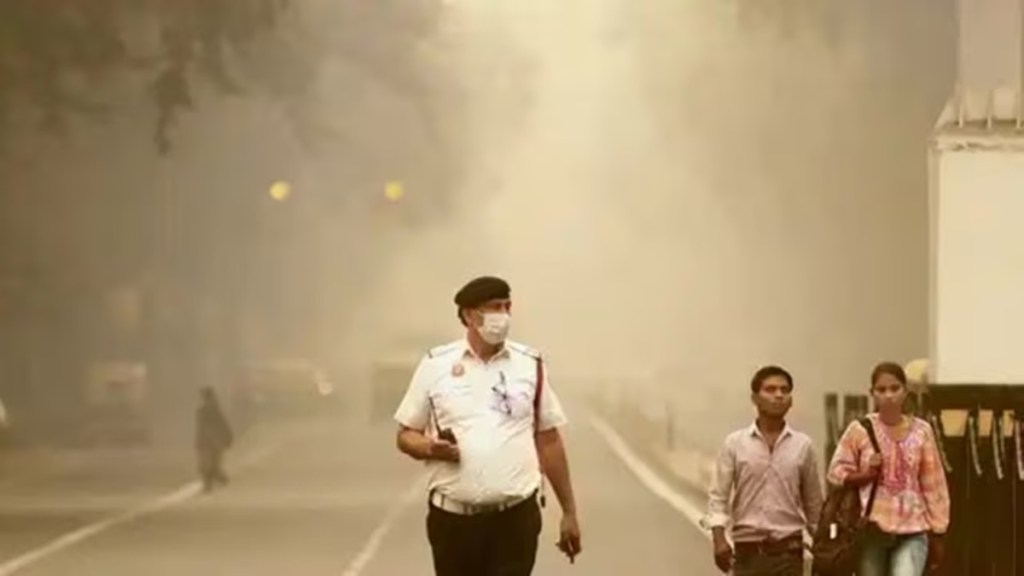The air quality in the national capital deteriorated to the ‘poor’ category on Wednesday due to unfavourable meteorological conditions combined with stubble burning and forest fires in neighbouring states, according to the Commission for Air Quality Management (CAQM).
At 4 pm on Tuesday, the city’s 24-hour average Air Quality Index (AQI) increased to 243. This led the CAQM, a government body responsible for reducing air pollution in Delhi-NCR, to quickly hold a meeting, which saw the presence of experts from the India Meteorological Department (IMD) and the Indian Institute of Tropical Meteorology, as per PTI.
“Delhi’s overall Air Quality Index (AQI) clocked 243 (‘Poor’ category) on date, as per the Daily AQI Bulletin from the Central Pollution Control Board (CPCB). Taking note of the increase in the average air quality of Delhi-NCR over past few days, the Sub-Committee for invoking actions under the Graded Response Action Plan (GRAP) of the Commission for Air Quality Management in NCR & Adjoining Areas (CAQM) accordingly met today to take stock of the current air quality scenario of Delhi-NCR and also assess technical as well as expert inputs related to forecasts for overall air quality of Delhi-NCR put forward by IITM/IMD,” the Ministry of Environment said in a press release, as ANI reported.
On Sunday, the 24-hour average AQI stood at 183, categorised as ‘moderate’. However, the index transitioned into the ‘poor’ category on Monday with a reading of 227, followed by 234 on Tuesday.
Also Read:Better roads likely saving Rs 2.4-4.8 trillion in logistics costs annually: FM
During the review session, experts told the CAQM that unpredictable wind patterns, influenced by strong convection and dry weather, along with high temperatures, were causing dust particles to linger in the air over the region.
Officials have highlighted that the frequent burning of agricultural leftovers in and around NCR areas and forest fires in nearby states may be worsening air quality. The CAQM has directed pollution control bodies in NCR and other relevant agencies to conduct thorough checks at major pollution hotspots, focusing on reducing dust.
They’ve been told to increase the use of water sprinklers and mechanical road sweepers in the area. Additionally, the commission has asked them to closely monitor fires and burning of waste, and to enforce dust control measures at construction sites more strictly.
Also Read:Delhi Police imposes traffic restrictions near DTU due to election training programme
What is AQI?
The Air Quality Index (AQI) gauges air purity on a scale of 0 to 500, classifying it into six categories. These include ‘good’ (0-50), ‘satisfactory’ (51-100), ‘moderate’ (101-200), ‘poor’ (201-300), ‘very poor’ (301-400), and ‘severe’ (401-500). Any AQI exceeding 500 falls into the ‘severe plus’ category.

